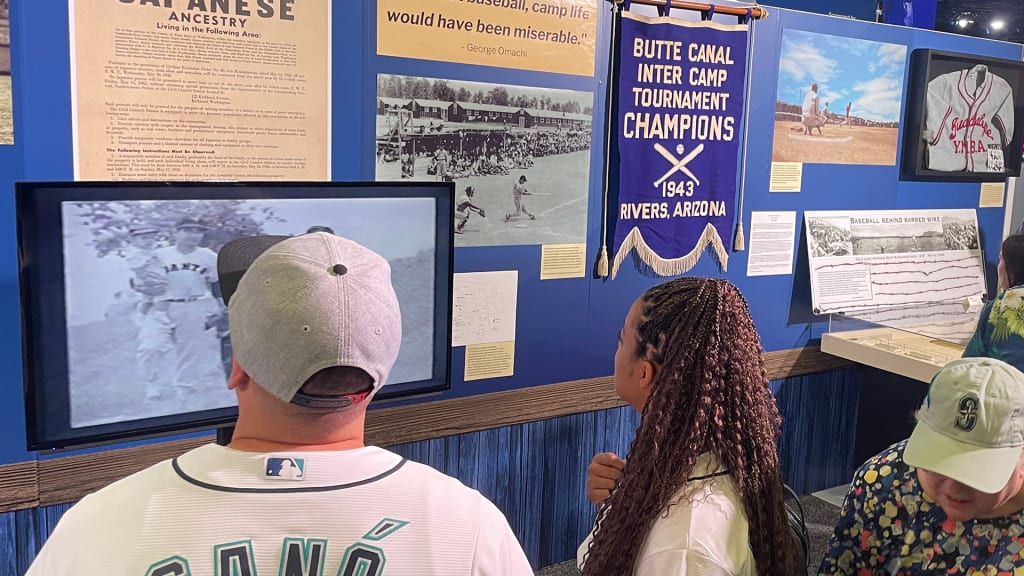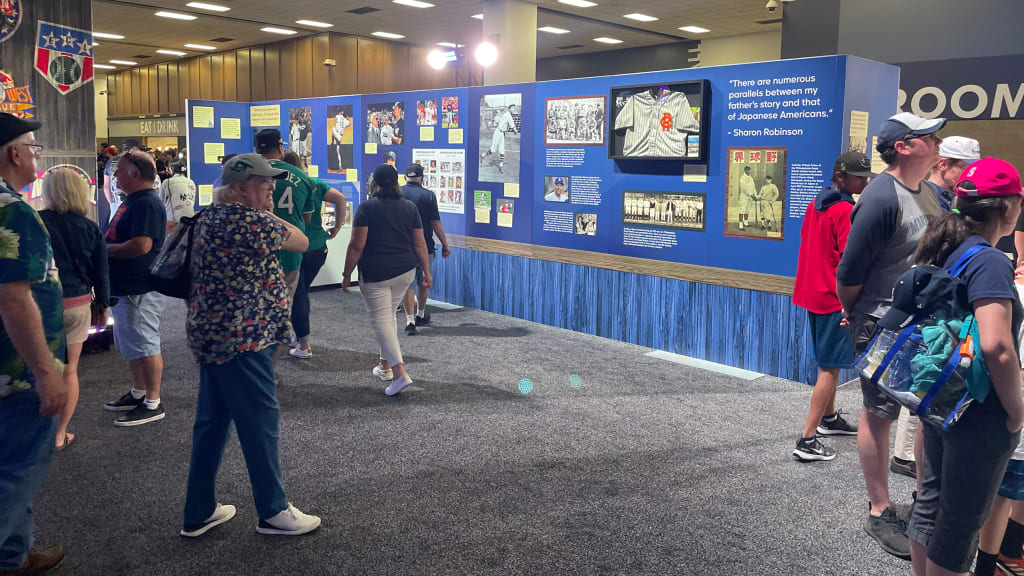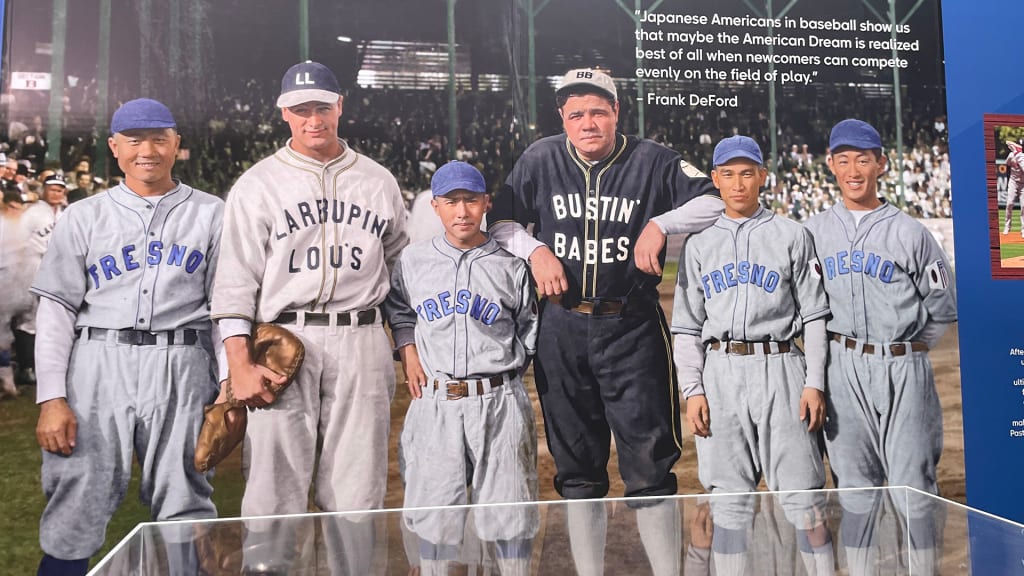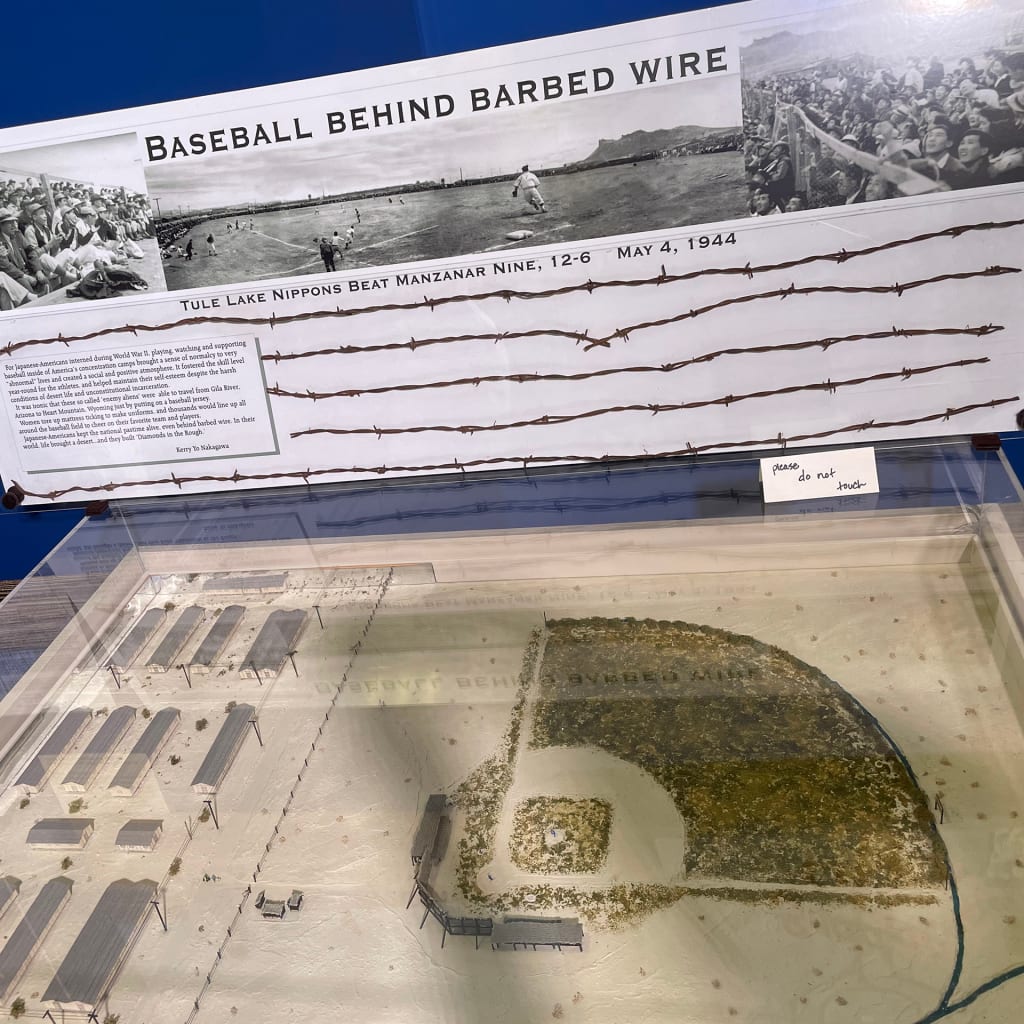SEATTLE -- The first thing Shohei Ohtani wanted to know upon his initial entrance into the home clubhouse at T-Mobile Park was where Ichiro Suzuki used to sit.
Ichiro’s legacy -- at the home of the Mariners and beyond -- is established. He is sure to be elected, perhaps unanimously, on the 2025 Hall of Fame ballot. His 2001 arrival from Nippon Professional Baseball was an inflection point for the sport, because his breakthrough that year as a combined Rookie of the Year and MVP inspired MLB teams to more aggressively scout and sign players from Japan.
Players like Ohtani, whose awe for Ichiro was voiced at Monday’s All-Star Media Day.
“I remember the first time I came here [to T-Mobile Park],” he said through interpreter Ippei Mizuhara, “I was like, ‘Oh, this is the place I always watched on TV.’ So it was really special.”
But there is so much more to Japanese baseball history than just that line from Ichiro to Ohtani. The legendary leadoff man and the incredible two-way talent both stand on the shoulders of Nikkei baseball pioneers. These athletes were marginalized, forgotten and, in some cases, imprisoned, and their story is being told during All-Star Week at a fascinating exhibit some 2,000 feet from where Ohtani sat.

The exhibit, titled “Baseball’s Bridge Across the Pacific: Celebrating the Legacy of Japanese American Baseball” is a part of PLAY BALL Park, the experiential fanfest being held this week at Lumen Field. The project leads are Kerry Yo Nakagawa, founder of the Nisei Baseball Research Project, and Bill Staples Jr., president of the Japanese American Citizens League’s Arizona Chapter.
Chronicling the journey of Japanese baseball -- from the introduction of the sport to Japan in the early 1870s to the first Japanese American teams in 1903 to the early tours in Asia that helped usher in the start of pro baseball in Japan in 1936, all the way to a present day in which Ohtani turns the sport on its head -- the exhibit’s panels and artifacts educate baseball fans about an oft-overlooked, but increasingly important, piece of the game’s history.
Nakagawa first began piecing together the exhibit in the 1990s, and its inclusion in All-Star Week this year is, to him, a major breakthrough.

“For 26 years, we’ve been trying to join what I call the ‘baseball history bus,’ with the All-American Girls [Professional Baseball League], the Latinos in baseball and the Negro Leagues,” Nakagawa said. “And this year is a baptismal, in a way, because this is the first time Major League Baseball has invited us to be a part of this PLAY BALL Park.”
For Nakagawa, the project is personal. He is the nephew of Johnny Nakagawa, a left-handed pitcher and home run hitter who was a member of the Fresno Athletic Club, which scheduled games against the top talent from the Pacific Coast League, California Winter League, Major League and Negro League barnstormers and visiting teams from Japan in the 1920s and 1930s. A fantastic colorized photo of Johnny Nakagawa and other members of that Fresno team alongside the barnstorming Babe Ruth and Lou Gehrig from Oct. 29, 1927, is prominently displayed in the exhibit.

“We had, in the 1920s and '30s, some great players that could have played and raised the bar at the Major League level,” Nakagawa said. “They had the tools and they had the passion. They just didn’t get the opportunity.”
Segregation at the Major League level did not stop these pioneers from playing the sport they loved, and neither did the awful internment of Japanese Americans during World War II.
Among the tens of thousands of people of Japanese descent -- many of them citizens -- who were forcibly relocated and incarcerated were baseball players. And as harrowingly documented in the exhibit, they kept playing behind barbed wire. In each of the 10 camps scattered across the American west and Arkansas, women tore up mattress ticking to make uniforms, and games were held to boost morale for both players and spectators. In camps like Gila River, Ariz., Heart Mountain, Wyo., and Jerome, Ark., games were even scheduled against the top high school, college and semi-pro teams from surrounding cities -- a rare respite from confinement.
Nakagawa said he has seen grown men cry as they observe an element of the exhibit that shows the layout of an internment camp beside a baseball field. It hammers home how demeaning the experience of being a Japanese person in the United States at that point in time could be.

Juxtapose that scene with a Media Day in which Ohtani was, unquestionably, the star among stars, his interview session populated by a mass of humanity and cameras.
You don’t get to Ohtani or to Ichiro, without the love of the game that inspired those of Asian descent to learn and share the sport. From 1922-31, no MLB teams toured Japan. During this period, it was Japanese Americans and their Negro League counterparts who conducted goodwill tours that helped shape the development of the game in Japan, leading to the creation of the Japan Professional Baseball League (the forebearer to Nippon Professional Baseball, in which Ichiro and Ohtani played) in 1936.
After World War II, baseball was an importance piece of rebuilding relations between Japan and the United States, with established Major Leaguers like Larry Doby and Don Newcombe among the first to cross over to NPB, further legitimizing a league that would eventually return the favor by delivering MLB some of its biggest stars.
As Ohtani’s legend grows, so, too, does the importance of those who came before him.
“I hope he feels that these are his ancestral godfathers,” Nakagawa said. “I can’t speak for them, but in spirit, I know they couldn’t be prouder of Ichiro and Ohtani and the ones that will keep coming.”
Nakagawa has big hopes for the exhibit to become a regular on the baseball historical traveling circuit. And of course, he has big hopes that Ohtani will one day tour it himself.
For now, Ohtani was swamped with the demands of his enormous celebrity status at this All-Star Game. But when asked about the importance of his baseball ancestors, he saluted a bridge that continues to be built.
“I’m not sure how the American people feel, but I definitely feel all the history of the guys that came before me who opened the door for me to be able to play over here,” Ohtani said. “And that’s one of my goals is to open the door for other guys to come over here and play in the future.”
